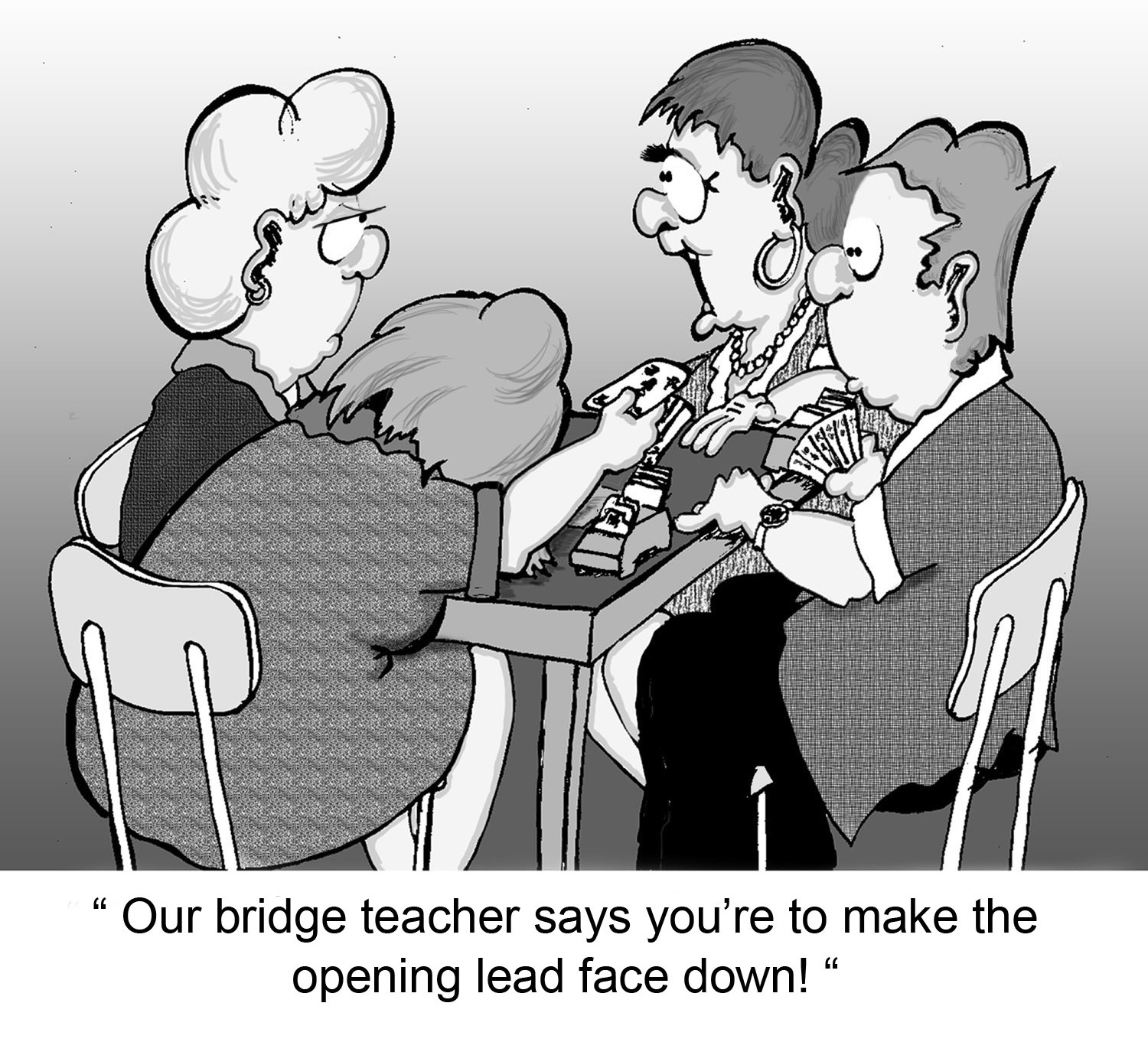The Cardinal Rules of Leading
1) Always return your partner's first lead !!! Your partner might be setting up the next trick. There are only 2 acceptable reasons for not returning your partner's first lead:
• First - you do not have that suit.
• Second - your recent death. If your partner later realizes that you did not return their first lead, the second item will be imminent. And a jury of bridge players will acquit your partner on grounds of justifiable homicide.
2) Lead the suit of your partner's first discard at the earliest opportunity. Your partner might be setting up the next trick, such as generating a void for ruffing.
Common Leads Against a Suit Contract vs a No Trump Contract
Leading Against a Suit Contract:
• Do NOT lead trump, unless there is a compelling reason.
• Do NOT lead to the dummy's tenace.
• Lead a singleton. If partner can take the trick and return your lead, you can ruff with a small trump. If partner bid a suit and you choose not to lead that suit to your partner, that could be a signal that you are leading a singleton.
• Lead the highest card from the suit your parter bid (the partners best suit). By leading the highest card, the partner has a better idea of where the other honor cards are.
• Lead an Ace of a long suit (5 cards or more). If you lead low, it may be the opponent’s short suit and the opponent might win the trick with a singleton king or another high card. Then the opponent might be void in that suit and can trump your ace on a later trick.
• Lead the top card of a sequence (three or more touching honors).
Leading Against a No Trump Contract:
• Do NOT lead to the dummy's tenace.
• Avoid leading, if possible, the suit bid by the opponents.
• Lead the highest card from the suit your parter bid (the partners best suit). By leading the highest card, the partner has a better idea of where the other honor cards are.
• Lead the top card of a sequence (three or more touching honors).
• Lead from the top of an interior sequence. (E.g., King/Jack/Ten – lead the Jack.)
• Lead a low card from your longest and strongest suit.
• Lead the “top of nothing” (the highest card in a suit without an honor card).
Aces: "To lead, or not to lead, ..... "
When should you lead an Ace?
• Against any 5, 6 or 7 level contract - lead an Ace (that is not trump) as soon as possible. It might not be good later in the game.
• Against opening leads of 3 or 4 of a suit - lead an Ace (that is not trump) as soon as possible. It might not be good later in the game.
• Leading a singleton Ace wil generate a void for ruffing future tricks.
Why not lead an Ace?
• Aces are best used when they take opponent’s honor cards. If you lead an unsupported Ace (no King), you may be helping your opponents build their suit.
• An Ace can be an entry back into your hand after building a different suit.
• Against a NT contract, leading an Ace is not usually a good idea. The ace is a "stopper" that can stop an opponent from running a suit.
 There is only one opening lead - the lead that begins the trick taking process. After the bidding is over, the player to the left of the declarer makes the opening lead by placing the card to be led on the table face-down and asks "Are there any questions ?" This serves two purposes:
There is only one opening lead - the lead that begins the trick taking process. After the bidding is over, the player to the left of the declarer makes the opening lead by placing the card to be led on the table face-down and asks "Are there any questions ?" This serves two purposes: